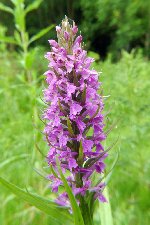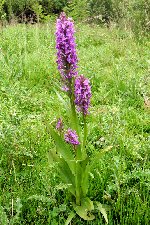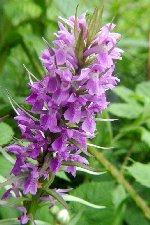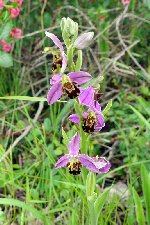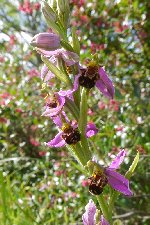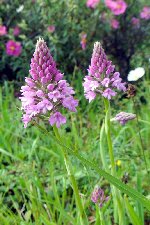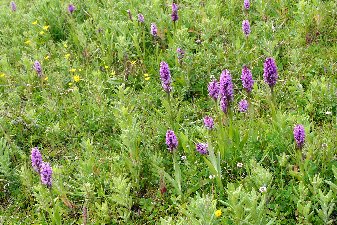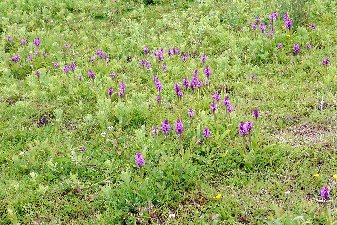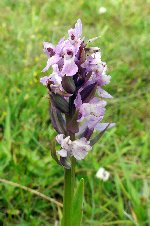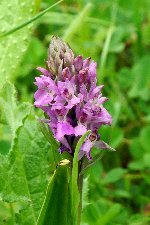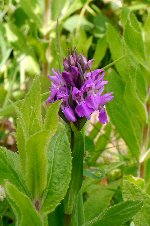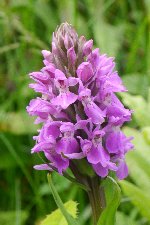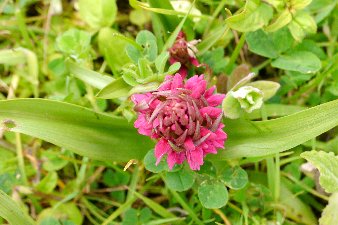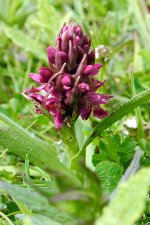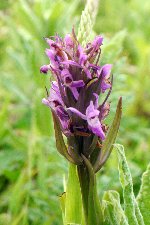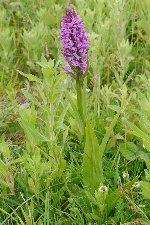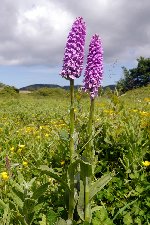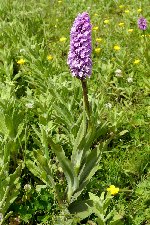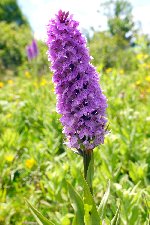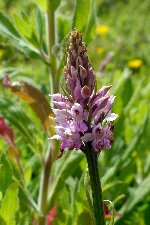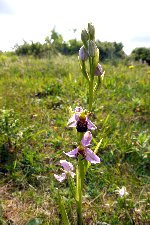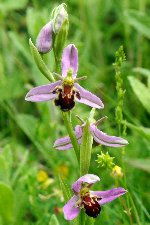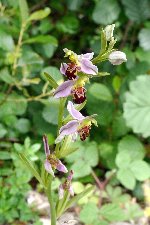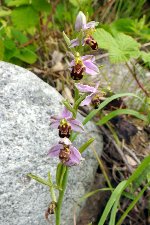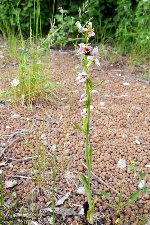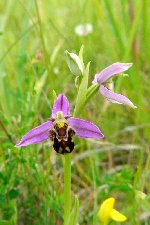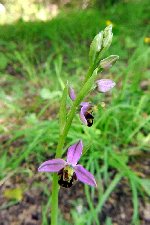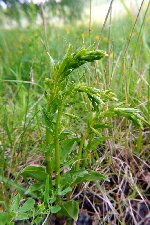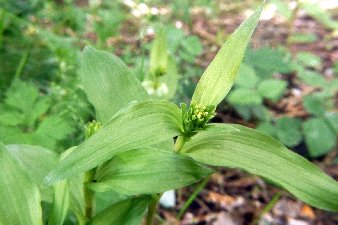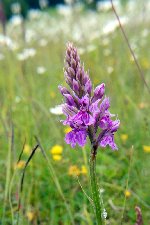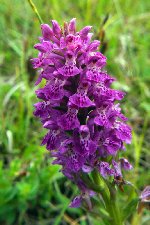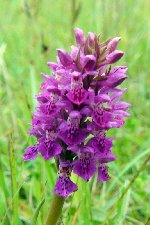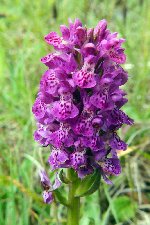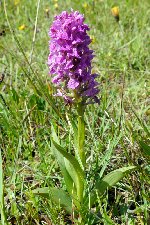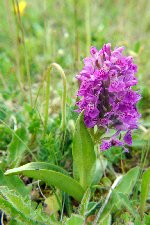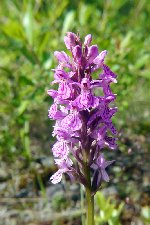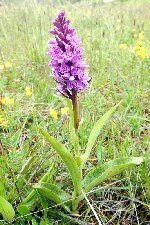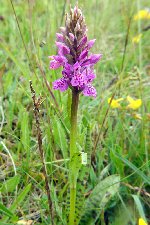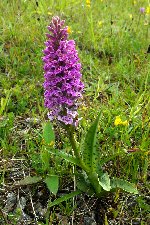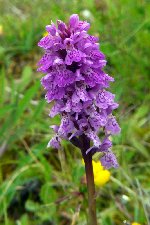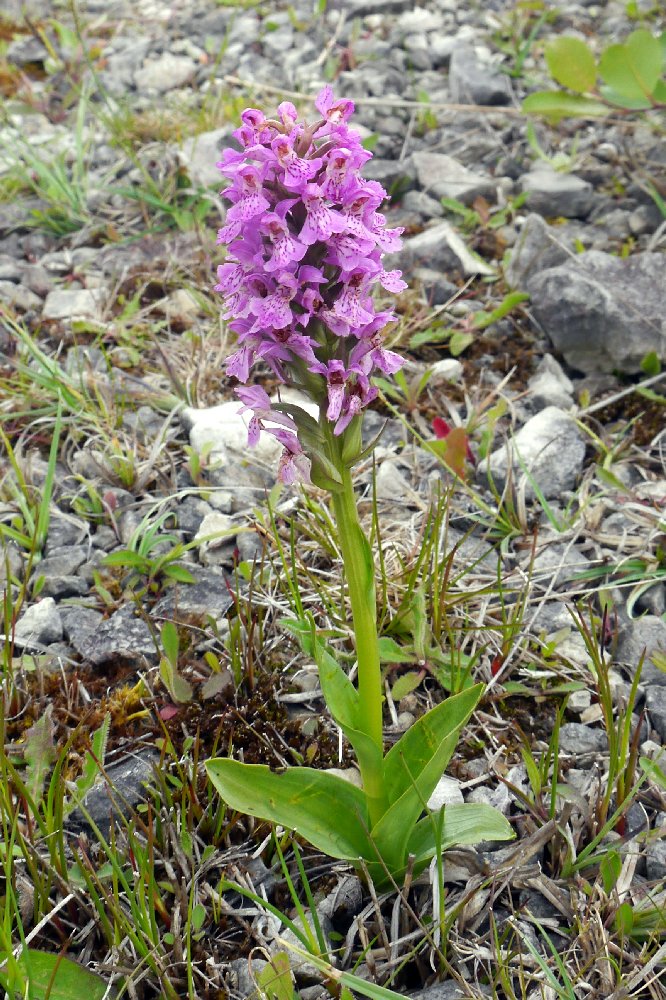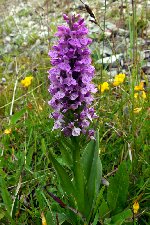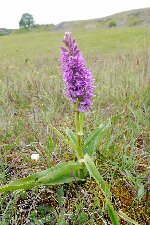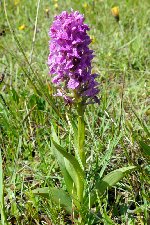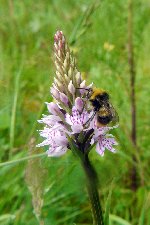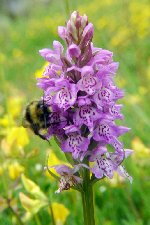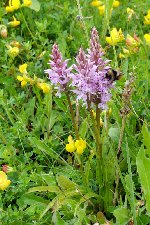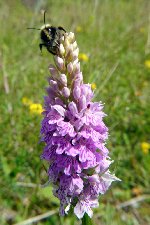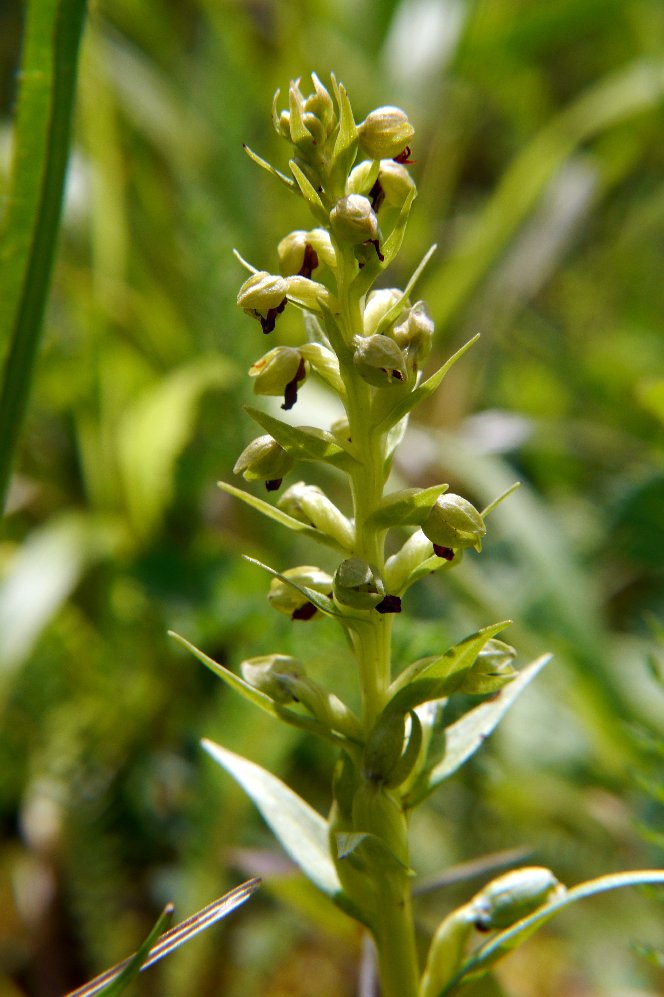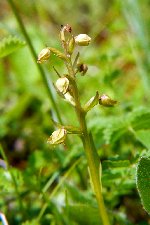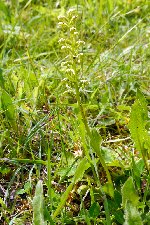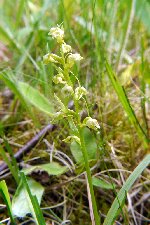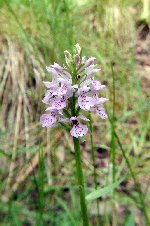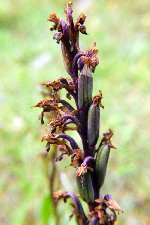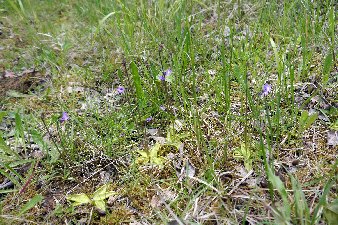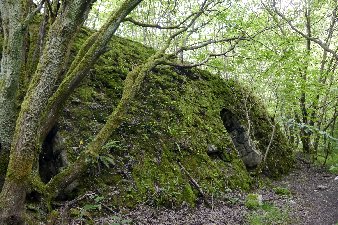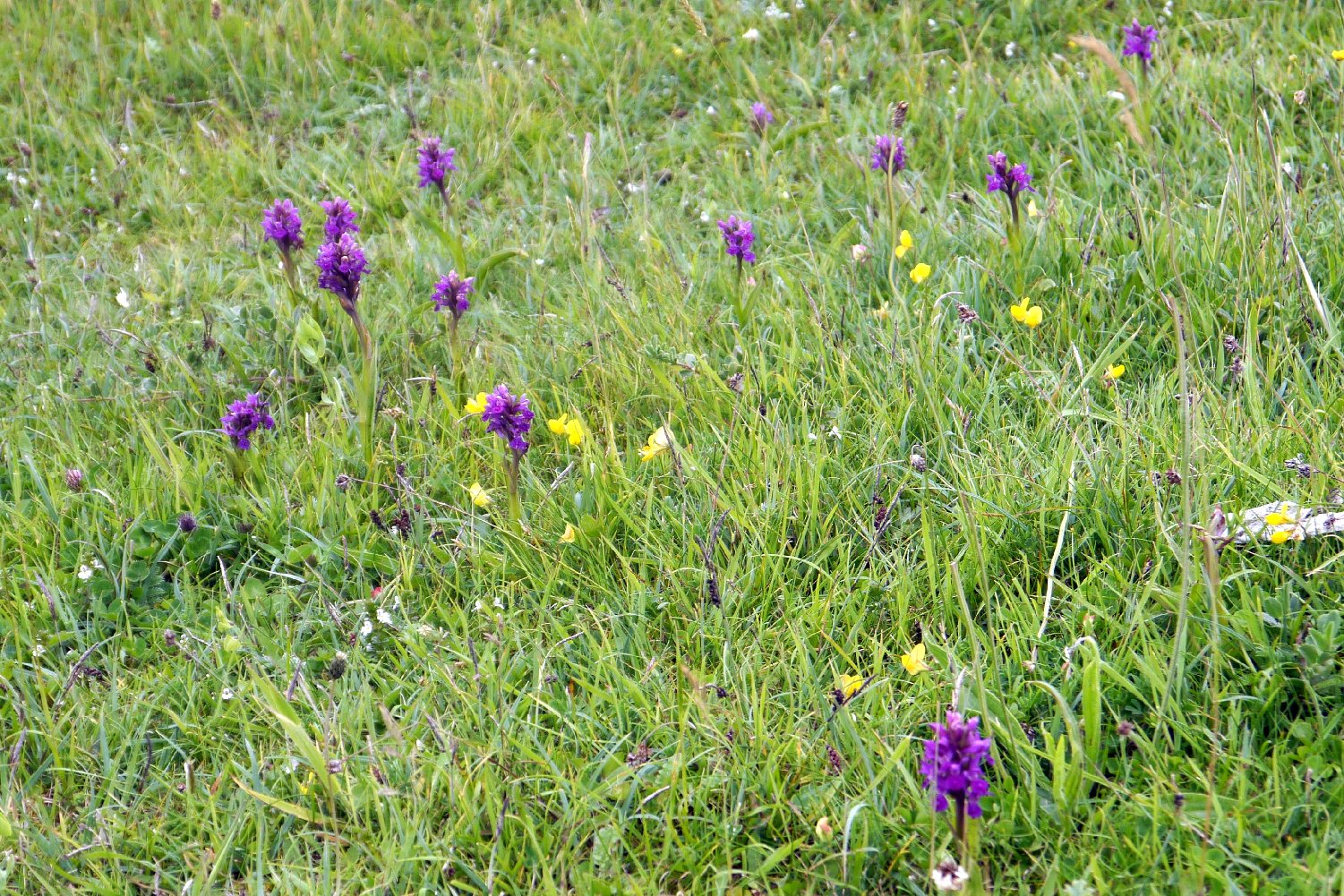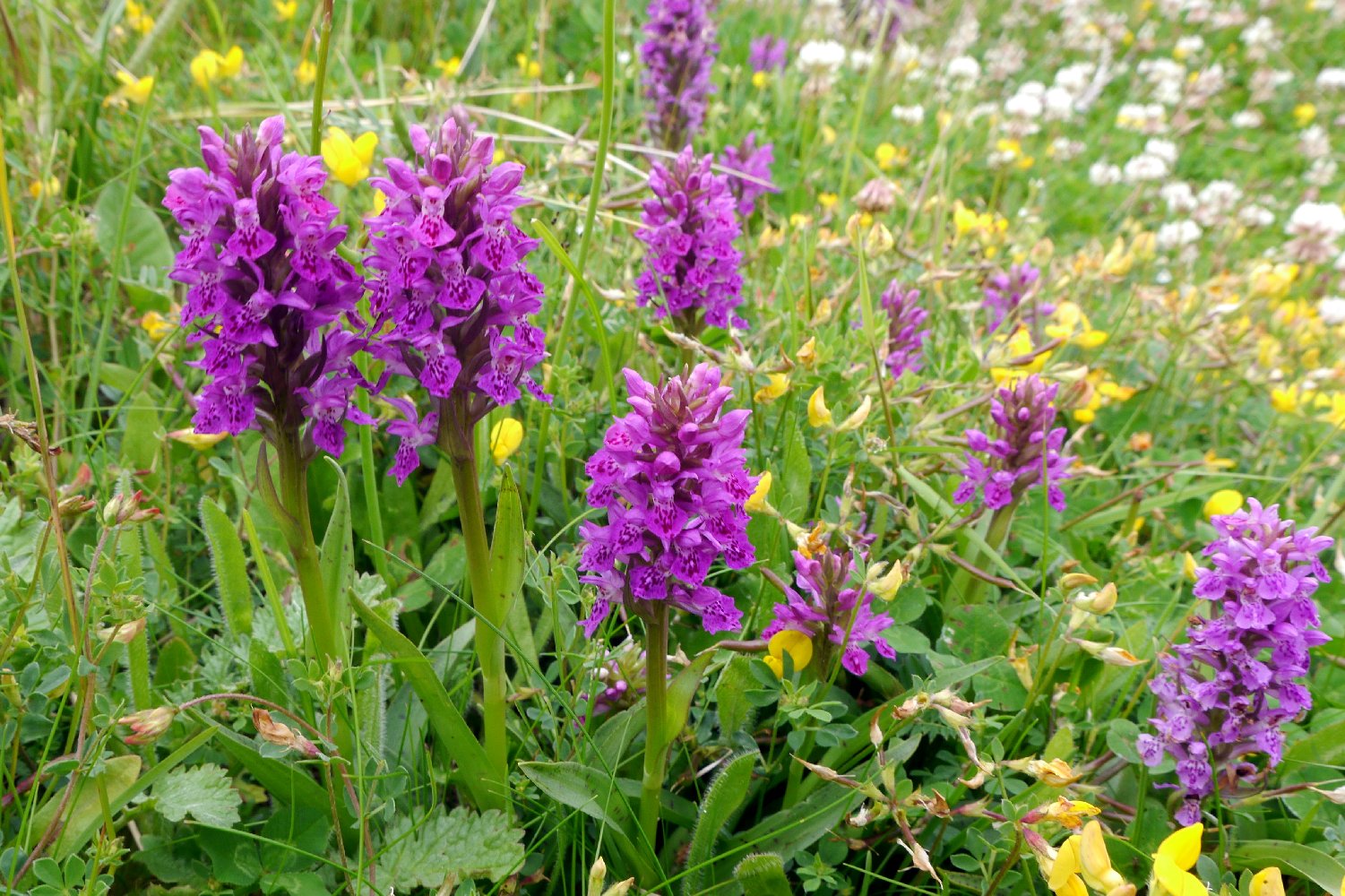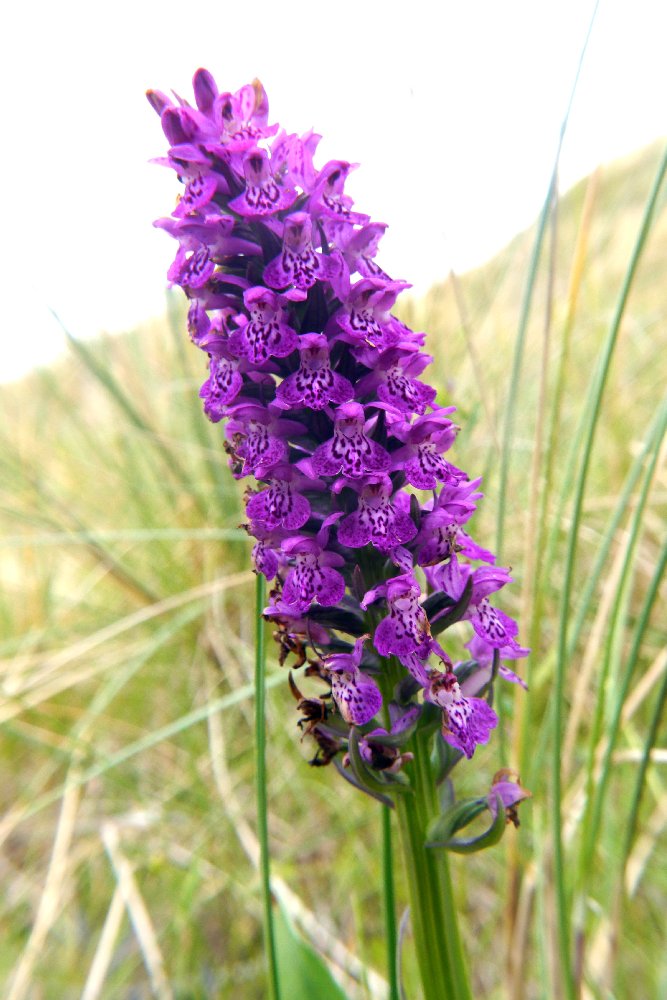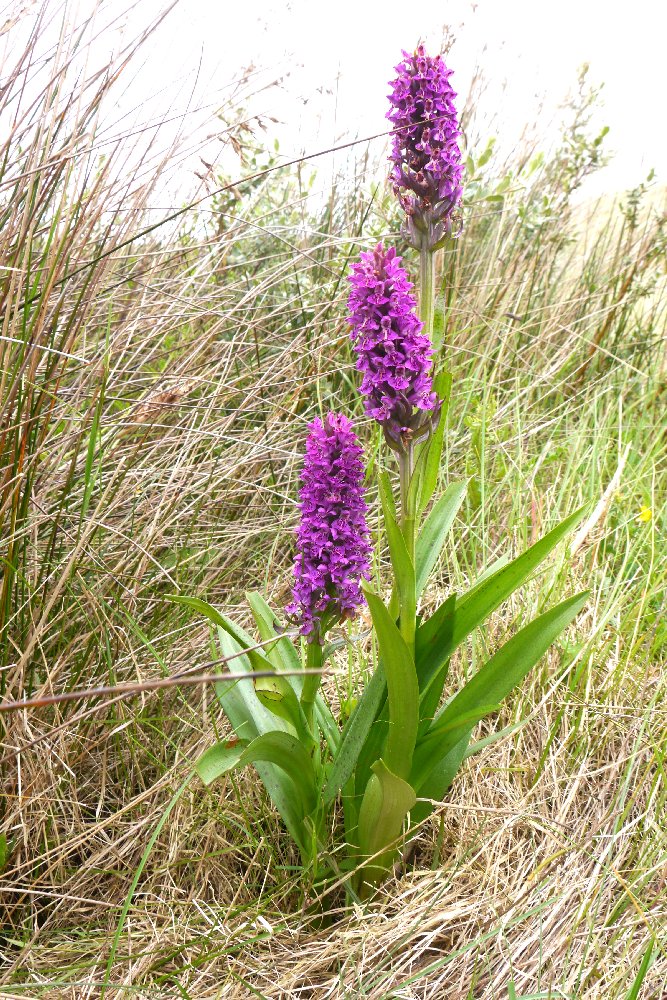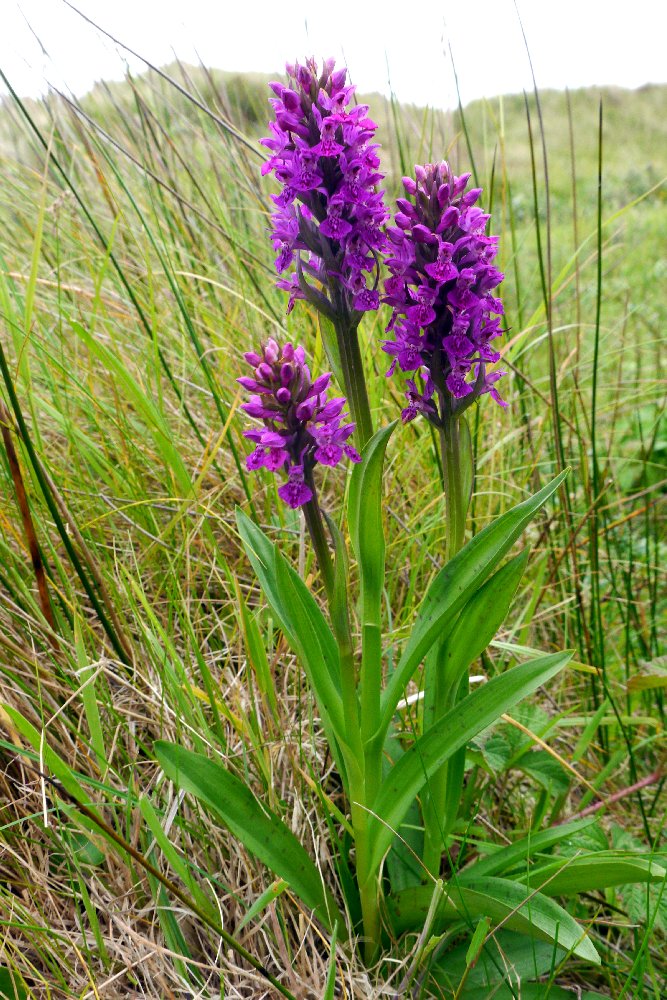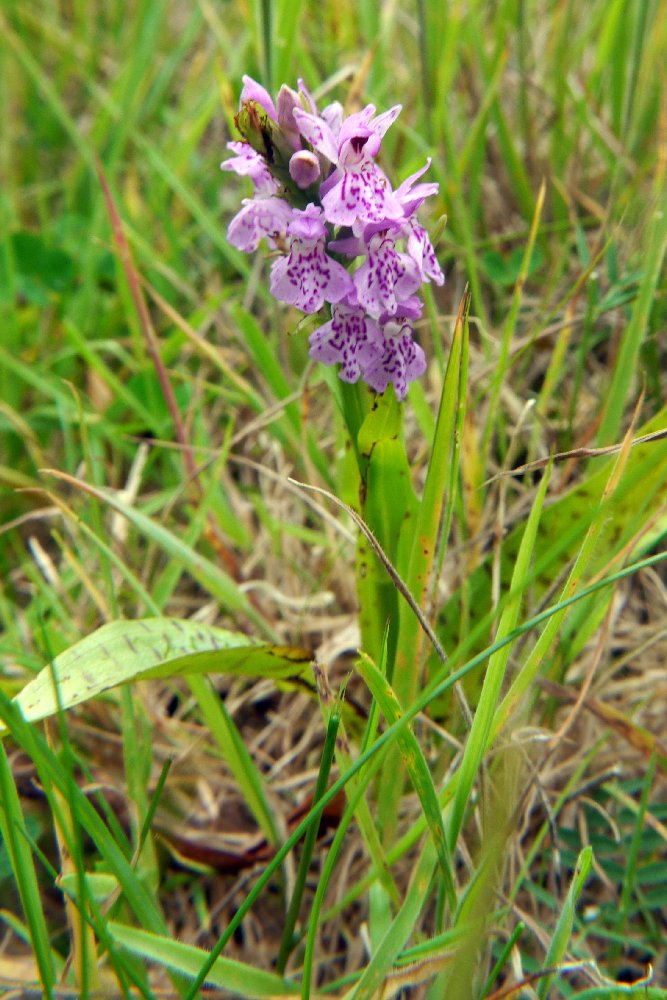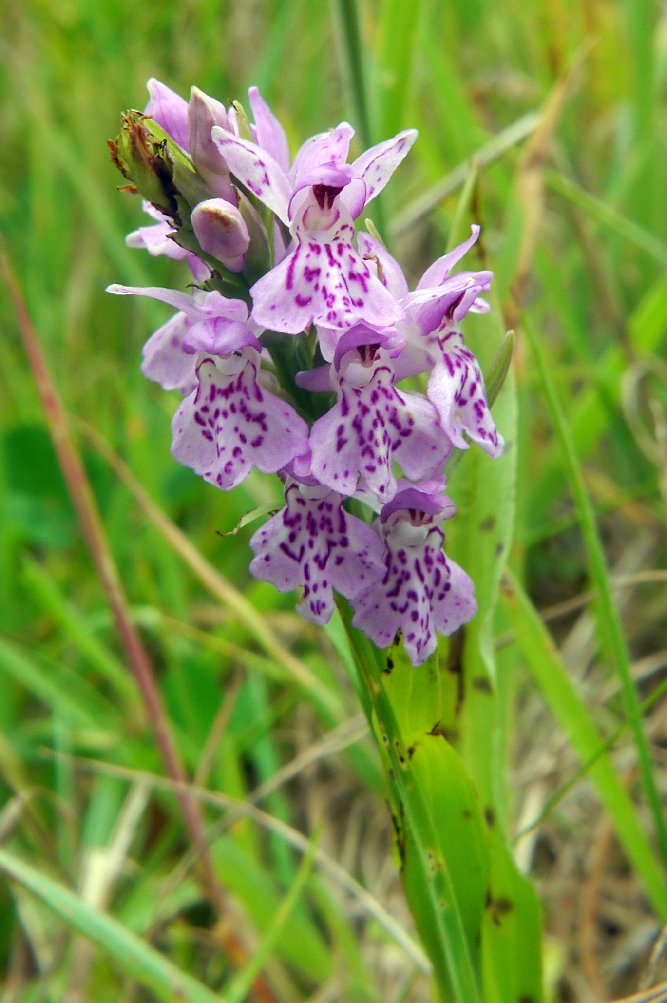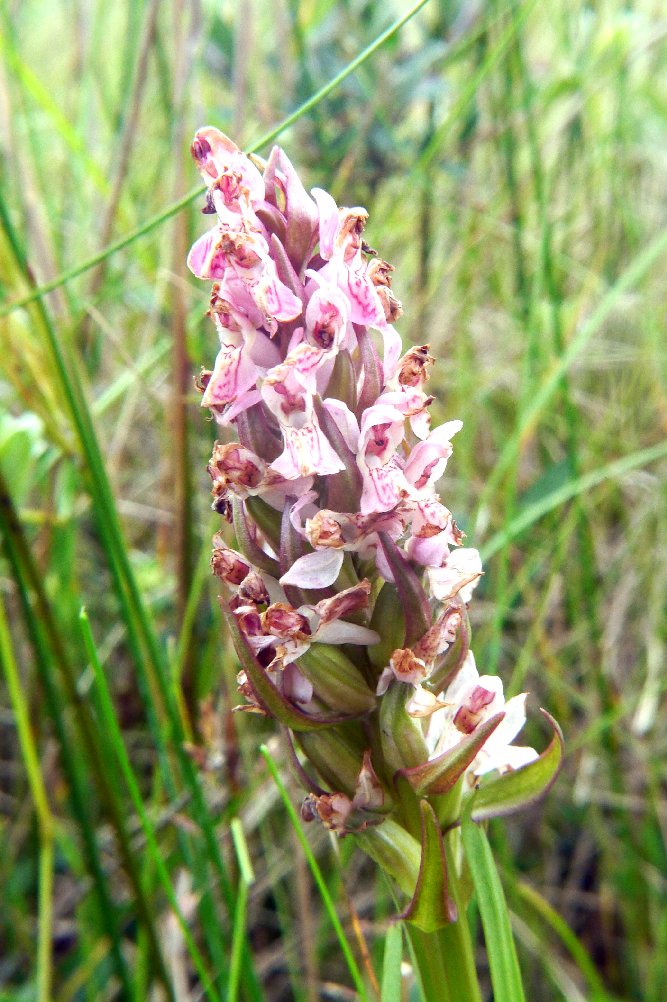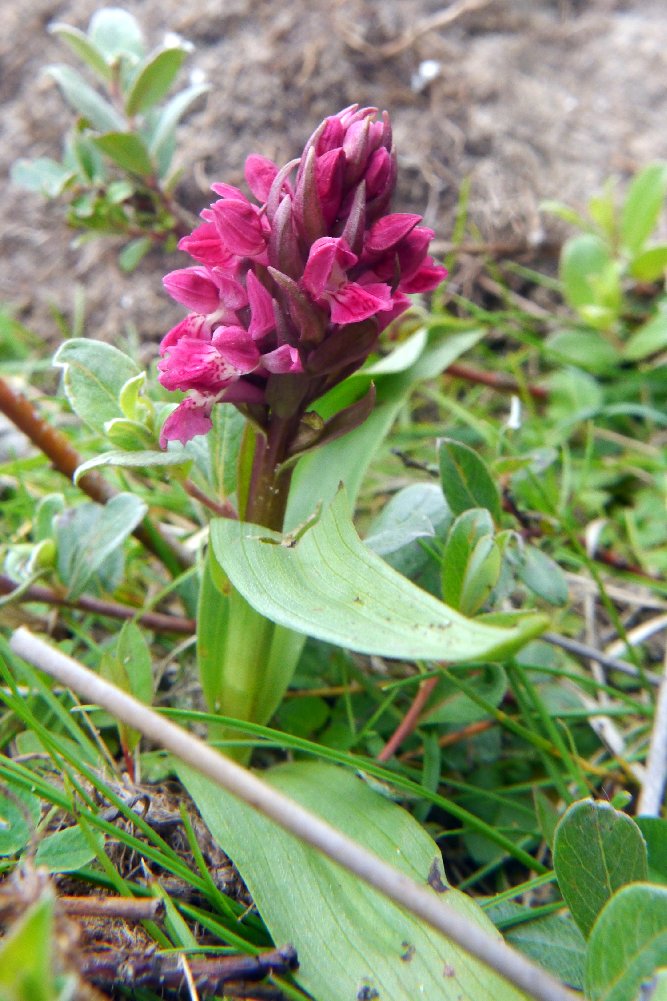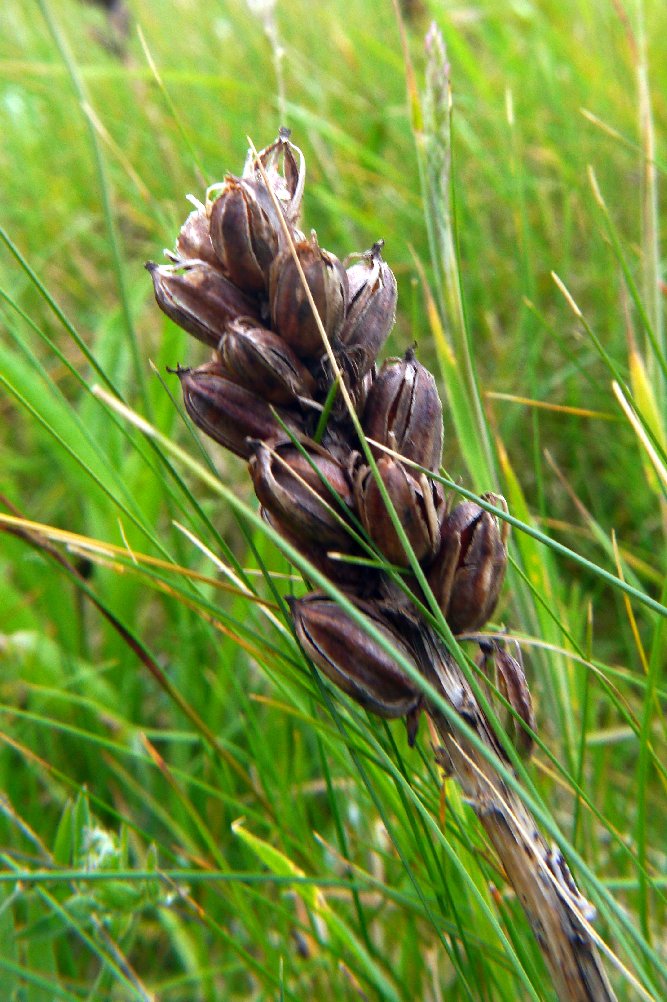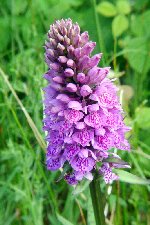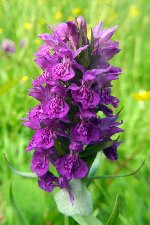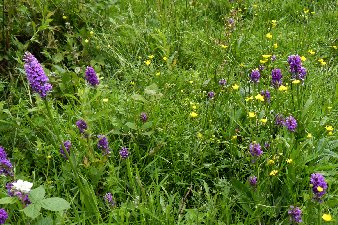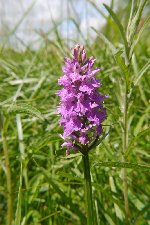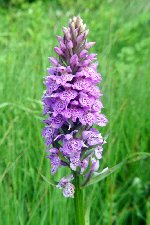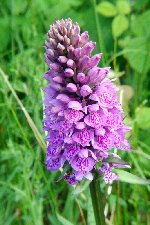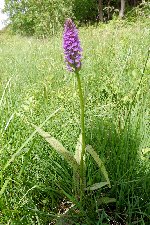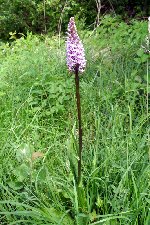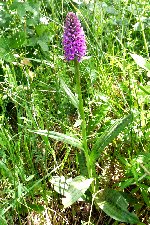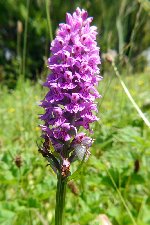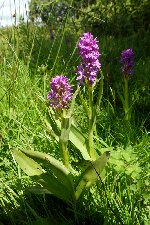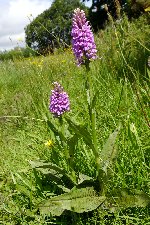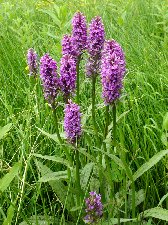|
|
|||||||||||||||||
|
|
|||||||||||||||||
 |
|
I was tipped off that the Southern Marsh Orchids on this former landfill site were a better show than on my first visit here last year. Sadly I had to leave it a bit too long before visiting, and though only the first day of June there were only 2 or 3 spikes not showing signs of going over. Still, I counted over 40 flowering spikes in the one corner where they grew. The solitary Bee Orchid seen last year wasn't visible, nor anything else. Llandudno Junction, 7th June 2017 (SH7939677742) On the way to the next site, on foot, there is a chance finding. At a busy roundabout, growing under the armco on the verge is a group of some 45 Bee Orchids in full flower and 5 Pyramidal Orchids just starting to flower. This perhaps just a ¬mile from the RSPB Reserve at Conwy, but I have my doubts that these have been colonised from there. I suspect these were introduced in aggregate and top soil imported here when the roads into the retail park were constructed. There are some nice examples with deep pink sepals. A full examination of the area may well reveal others - at least where the grass has not been strimmed or mown. Conwy RSPB, 7th June 2017 (SH797773) Second visit here at orchid time, with the previous visit in 2015. Have things changed? Yes and no. There is still a good display of Southern Marsh Orchids especially at the same spot where they grew in the hundreds, and you could see a grouping of deeper coloured flowers, and next to it another of paler typical ones. Compared to those at Gowey which were rather uniform in colour, the Southern Marsh Orchids here threw up some quite different flower colour shades. Almost as if they were derived from a pair of quite different parent plants. Additionally we spot some of a more pink shade. There are a few Early Marsh Orchids ssp coccinea but these were barely in flower. One developing flower spike showed a rather interesting spiral pattern from above. Mixed in with these was a small population plants showing a mix of features; Southern Marsh colour and lip pattern, with Early Marsh `rabbit ears' lateral sepals and recurved lip. If they are such a hybrid they would be D. x wintoni.
Nearby, and not noticed in 2015, were what, seen from the path, seemed to be tall Common Spotted Orchids. They turned out to be the hybrid D. Xgrandis, the hybrid between Common Spotted and Southern Marsh Orchids. They showed marked hybrid vigour, growing above knee height, with large dense inflorescences, and rather muted spotting on the leaves. The actual Common Spotted Orchids growing with them were short, pale and rather ratty looking.
The strange thing about the Bee Orchids this year was that they seemed to be growing in quite different areas to 2015. They weren't very numerous, were somewhat slug or bug damaged, and the best spot in 2015 along the estuary path was quite devoid this year. Some of these showed rather large lateral lip lobes, more like a pair of stubby arms. In fact the best Bee Orchids were the 25 or so growing on aggregate on the expressway side of the car park edge. This to me suggests that they are not part of the same colonisation as those within the reserve. The soil in which the two populations grow are likely to have been imported independently. The non-public area in from of the cafe sports a few Pyramidal Orchids confirmed by using the telescopes put there for the birders.
Alyn Waters Country Park, 9th June 2017 (SJ3296854959) A return to check on the Bee Orchids which looked like giving a poor display this year. We actually found over 45 on the Llay side, most in good health, but over on the Gwersyllt side their growing spots seemed overgrown and almost impassable. We saw only 5. Elsewhere not too much to report. The Green-flowered Helleborines are still doing well, and are noticeably more advanced that the Dune Helleborines. I am hoping to rediscover the Helleborine that looked unusual last year, but died off before the flowers opened. Back in 2012 or so I heard of a CSO var rhodochila growing here. search each year has proved fruitless. It may have died or been dug up, but looking at some rather quite colourful CSOs I begin to wonder if the actual truth has been misconstrued and there was no actual rhodochila after all.
Minera Quarry, 11th June 2017 (SJ2509152180) Its been four years since we visited here in June, so high time that we got to see the Marsh Orchids here again. We seem to have arrived with perfect timing. They grow throughout the quarry but in great numbers on the large short-turfed area at the far end beyond the little pond. There is a good population of classic Northern Marsh Orchids, deeply coloured, shield shaped lip and unspotted or faintly mottled leaves. But there is another equally numerous population of other marsh orchids. They seem larger overall, quite stocky and have deeply spotted leaves. The background flower colour is paler than the Northern Marsh which makes the magenta lip markings really stand out. The lip is trilobed, the centre coming to an obvious point, and mostly with obvious sinuses between the lobes. With the numbers of CSO and NMO on site it is easy to label these as the hybrid x venusta. However, apart from not growing coastally, they fit the descriptions given for Welsh Marsh Orchids (D. purpurella cambrensis). There are well over 100 plants that show little variation. A hybrid swarm would show quite a degree of variation surely. A third population of marsh orchids could also be identified. These have unspotted leaves which may be large and spreading. The lip is also trilobed but with less apparent sinuses and with less heavy markings. Could these possibly represent hybrids - D. x venusta. One has to ask, though, whether these are hybrids of Welsh Marsh and Common Spotted Orchids. More outings are planned where Northern Marsh and Common Spotted co-exist.
It wasn't difficult to find bees attempting to find nectar on the Dactylorhiza. They would be unsuccessful as the majority of the genus operate by deceit as they offer no rewards. Attracted by colours and patterns the bees visit every flower trying to find food. All instances here seem to feature the female Early Bumble Bee, Bombus pratorum. We returned two days later and explored an area new to us; what looks like old spoil heaps beyond the remains of the Hoffmann lime kiln. There were ripening seed heads of Early Purple Orchids which is the first time that we have seen these in the quarry as opposed to the high ground above. There was a single plant by a damp wooded path that seems to be a Heath Spotted Orchid. The usual suspects for the site were present, with Common Spotted Orchids sporting quite a range of background colour. And finally after years of searching we see five Frog Orchids. I last saw these here high above, on the lip of the quarry, in the early 1980s. These are largely gone over, quite short, and just shades of green, so rather boring. But at last we have seen some here. There was also a sort of spring with a seepage line that hosted hundreds of Common Butterworts. Surprisingly. some of these were still at the peak of flowering.
Talacre Dunes, 13th June 2017 (SJ1181484975) A return here a little over two weeks earlier than last year to catch those orchids that were going over at the beginning of July. At the start of the walk it is all Pyramidal Orchids - a good year with hundreds here and there. Further on and its all Northern Marsh Orchids and again hundreds of them, mostly short plants in short turf. But there are some much taller examples in longer undergrowth. Their size even suggests hybrid origin, but otherwise they look typical Northern Marsh. There are very few of the Dactylorhiza hybrids that were fairly plentiful last year. Is this weather factors coming into play? Common Spotted Orchids are nearly absent. Large numbers of last year's seed heads can be seen, often with only leaves and no flower this year.
Coming earlier has not worked out. The scanty Early Marsh Orchids ssp incarnata have still largely gone over while the ssp coccinea equally scanty are only just getting under way. No sign of any Bee Orchids this year.
Buckley Common, 13th June 2017 (SJ272649) I've stopped here in order to get some photos of the hybrids here for comparison with the flowers seen at Minera a couple of days ago. But something has changed! At least on the roadside areas. The strips that are mowed seem to have been done a bit earlier this year, and the rest seems to harbour tall grasses and worse. One area that harboured a fine collection of orchids of all local flavours now boasts just three. However, it is a different picture actually on the common, with Northern Marsh Orchids, Common Spotted Orchids )some of which are monsters, hinting at some hybrid origin), and their hybrid x venusta. What is interesting is that the two parent populations seem to grow close to each other in discrete areas, but the hybrids tend to grow with the Northern Marsh. To me this suggests that the Common Spotted Orchids are the pollen parent, and the fertile seeds scatter around the ovary parent.
|
|
|
||||||||||||||
